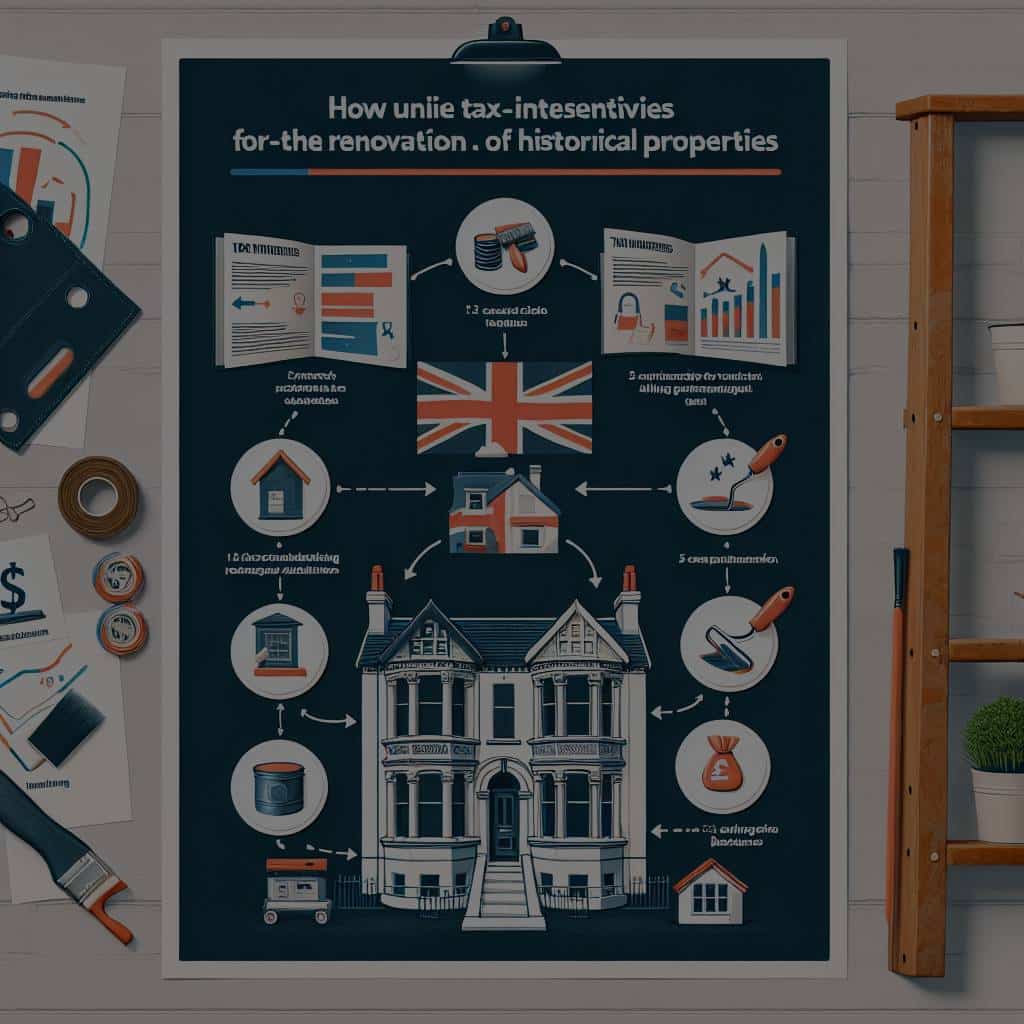Renovating a historic property in the UK can be a rewarding and profitable venture. Not only do you get to restore a piece of history to its former glory, but you can also benefit from unique tax incentives that the UK government offers, making the process financially beneficial. Tax credits and incentives can help offset the expenses of rehabilitation and development, providing you with the necessary financing to undertake and complete these projects. This blog post delves into how you can leverage these programs and incentives, and navigate your way to successful property refurbishment.
Understanding the Importance of Tax Incentives for Historic Property Renovation
Before delving into the specifics of tax incentives, it’s critical to understand their significance. When the government encourages the preservation of historic properties, they are keen on maintaining the cultural and architectural heritage of the country. To achieve this, they offer tax credits and incentives to businesses and individuals willing to rehabilitate these properties.
Also to see : How to Use Augmented Reality for Enhancing Real Estate Property Views and Sales?
Tax incentives can provide you with substantial savings. They reduce the amount of tax you owe, effectively exempting a portion of your income from tax. For businesses involved in property rehabilitation, these incentives directly contribute to improving the bottom line by reducing the overall expenditure on such projects. Therefore, they not only make such projects feasible but also economically attractive.
Types of Tax Incentives Available for Historic Property Renovation
There are several types of tax incentives that you can take advantage of when renovating historic properties. Understanding each type and its specific requirements is key to maximizing your savings.
Additional reading : What Are the Financial Benefits of Retrofitting Old Buildings with Green Technologies?
-
Historic Tax Credits (HTC)
The Historic Tax Credit program provides a 20% tax credit for businesses that undertake substantial rehabilitation of historic properties. The credit applies to the qualifying expenses of the rehabilitation.
-
Property Tax Exemptions
Some local governments offer property tax exemptions for historic properties. These exemptions can significantly reduce the property tax burden, thereby increasing the profitability of your renovation project.
-
Business Rates Relief
If the renovated property is used for commercial purposes, you may qualify for business rates relief. This relief can help reduce the amount of business rates you need to pay.
Compliance with Historic Property Renovation Standards
While tax incentives offer great savings, it’s important to comply with specific renovation standards to be eligible. The UK government sets these standards to ensure the historic integrity of the property is maintained.
For instance, the rehabilitation work should preserve the significant historic features of the property. Any changes or alterations should be in keeping with the original character of the building. Failure to comply with these standards may result in the disqualification of your project from tax incentives.
Navigating the Application Process for Tax Incentives
The application process for tax incentives can be complex and requires careful attention to detail. It’s crucial to understand the requirements and timelines to ensure a successful application.
Firstly, you need to determine whether your property is eligible for tax incentives. This generally requires the property to be listed on the National Register of Historic Places or being a contributing structure within a designated historic district.
Next, prepare a detailed rehabilitation plan outlining the proposed work. This plan should demonstrate how the proposed work will preserve the historic character of the property.
Once you have prepared your rehabilitation plan, you need to submit an application to the appropriate authority. This could be the local council or a designated heritage body. The application should include the necessary documentation such as the rehabilitation plan, photographs of the property, and any other required information.
Finally, upon approval of your application, you can commence your renovation work. It’s critical to note that you should not begin any rehabilitation work until your application has been approved. Starting work before approval may lead to your project being disqualified from the program.
Maximizing Your Savings through Strategic Planning
To make the most of the available tax incentives, strategic planning is crucial. This could involve planning your renovation work in phases to maximize your tax credits or choosing to undertake substantial rehabilitation work to qualify for higher credits.
Furthermore, consider hiring a tax professional who specializes in historic property rehabilitation. They can help you navigate the complex tax laws and ensure you’re making the most of the available incentives. They can also help you plan your renovation work in a manner that maximizes your tax savings.
Remember, historic property renovation is not just a business venture. It’s a path to preserving the country’s heritage and contributing to its cultural legacy. With the right approach, you can make it a profitable venture while reaping the rewards of your hard work and dedication.
Reaping the Benefits of Tax Credits for Job Creation and Business Growth
The UK government is not only focused on the preservation of its cultural heritage through the renovation of historic properties. It also views these projects as significant drivers of economic growth. This comes about through the creation of jobs and the fostering of small businesses growth.
Historic property renovation projects are often labor-intensive, requiring a range of skilled workers from architects to construction crews. By providing tax incentives for these projects, the government is indirectly supporting job creation in various sectors.
Additionally, these projects can stimulate local economies. For instance, renovated historic properties can house small businesses, contributing to their growth and success. These businesses in turn create more jobs and generate income for local economies, creating a positive domino effect.
Historic Tax Credit (HTC) programs, in particular, have been instrumental in supporting the growth of small businesses. The tax savings from these credits can be reinvested back into the business, bolstering their financial health and promoting sustainability.
It’s crucial to note that to maximize these benefits, you should plan your project in a manner that aligns with the intended socio-economic goals. For instance, opting for local labor and materials can help stimulate your local economy while also meeting the requirements for the tax incentive programs.
Leveraging Renewable Energy and Affordable Housing through Historic Property Renovation
Renovating historic properties also opens up opportunities to leverage renewable energy options and contribute towards affordable housing solutions.
In the face of today’s climate change crisis, incorporating renewable energy sources in your renovation project could be a strategic decision. Besides aligning with global sustainability goals, it could potentially qualify your project for additional tax credits and incentives. For instance, some jurisdictions in the UK offer tax incentives for buildings that incorporate renewable energy systems.
On the other hand, the need for affordable housing is a pressing issue in many parts of the UK. Historic buildings, once renovated, can provide an affordable housing solution. The Historic Tax Credit has been used in some cases to turn historic buildings into affordable housing units. This not only breathes new life into the building but also provides a much-needed service to the community.
In conclusion, leveraging tax incentives for historic property renovation can be a win-win situation for everyone involved. These incentives can significantly reduce your overall project costs, making it financially viable to undertake substantial rehabilitation projects. Furthermore, these projects can contribute towards job creation, foster the growth of local businesses, and support renewable energy and affordable housing initiatives. It’s important to carefully navigate the tax laws and processes to maximize these benefits, possibly with the assistance of a tax professional. With strategic planning and compliance with historic renovation standards, your project can both preserve the cultural heritage of the UK and contribute to its social and economic progress.






